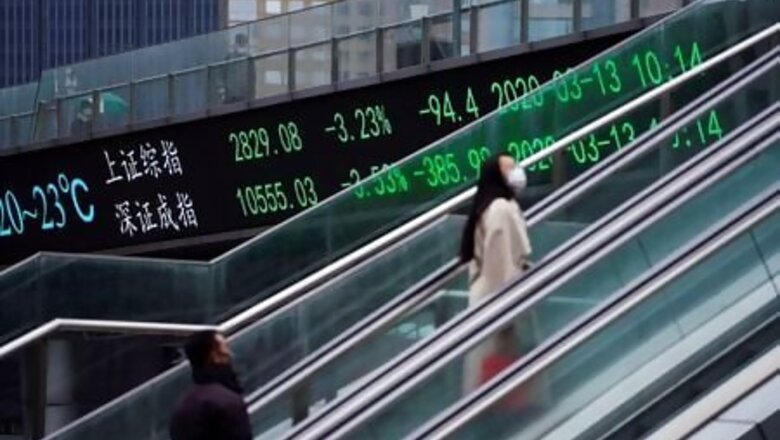
views
LONDON Stocks slipped on Thursday as investors waited for signs of agreement on a U.S. aid package to counter damage from the coronavirus pandemic, with poor corporate earnings reports also weighing on European shares.
The Euro STOXX 600 fell 1%, with London’s FTSE shedding 1.6% as the pound jumped to a five-month high. The Bank of England had earlier left interest rates unchanged, saying it was still weighing the risks of cutting rates below zero to revive growth.
Paris fell 1.2% and Frankfurt 0.9% after worse-than-expected corporate earnings reports.
Europe’s mining index fell 2.4% after Glencore scrapped its dividend. AXA slumped 4.4% after it dropped its 2020 earnings target and said it wouldn’t make additional payouts to shareholders in the fourth quarter.
Almost 60% of STOXX 600 companies that have reported results so far have topped lowered estimates, according to Refinitiv data. In a typical quarter, half beat estimates.
S&P 500 futures turned negative.
The MSCI world equity index, which tracks shares in 49 countries, fell 0.2% and was on course to end three straight days of gains.
Markets are waiting for cues on the shape of a U.S. fiscal recovery package, currently subject to political wrangling in Washington, said Hugh Gimber, global market strategist at J.P. Morgan Asset Management.
Top congressional Democrats and White House officials appeared to harden their stances on the relief plan on Wednesday, with few hints of compromise or that an unemployment benefit as generous as $600 a week could be reinstated.
“Stocks are really struggling to find direction until we know the outcome of those negotiations,” Gimber said. “The clock is ticking for U.S. policymakers to get something done.”
Fears that economic recoveries across major economies are diverging have been playing out in currency markets, with the dollar’s two-year supremacy at risk.
With figures on jobless claims in the U.S. labour market looming at 1230 GMT, the dollar fell in early trading to a two-year low as investors weighed whether the U.S. economic recovery from the coronavirus hit was lagging other major economies.
The euro climbed to its highest against the dollar since May 2018 before giving up its gains. It was last down 0.2% at $1.18430.
That weak dollar, strong euro trend is set to continue into next year, a Reuters poll showed, on expectations the U.S. economic recovery is flagging, especially compared with Europe.
BoE STEADY
The British pound rose to a five-month high against the dollar after the Bank of England left interest rates at 0.1% and warned about possible risks from taking rates below zero.
Negative rates “are part of our toolbox … But at the moment we do not have a plan to use them,” Bank of England Governor Andrew Bailey told reporters.
The BOE offered less grim predictions on unemployment and GDP contraction than it had in May, but it said the British economy would not recover to its end-2019 size until the end of next year. In May, it had said that milestone would be reached during the second half of 2021.
“More important for pound performance in the near-term were the BoE’s comments on the likelihood of further policy easing later this year,” analysts at MUFG wrote. “The comments did not send a strong signal that the BoE is moving closer to adopting negative rates.
Sterling was last up 0.4% at $1.3170.
Disclaimer: This post has been auto-published from an agency feed without any modifications to the text and has not been reviewed by an editor


















Comments
0 comment